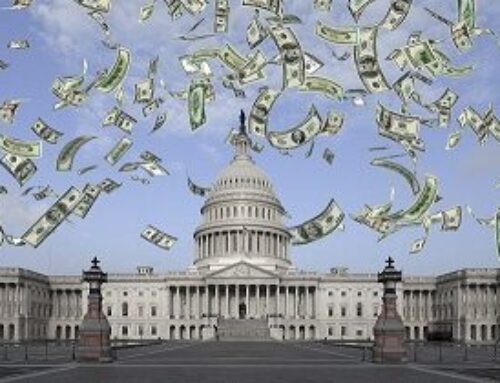As a breach of the nation’s debt ceiling loomed earlier this month, President Joe Biden urged quick action by lawmakers.
The nation’s debt ceiling approximates the credit limit on a credit card: It’s a dollar figure that constrains how much debt the federal government can carry at a given time in order to pay for its operations.
The nation was poised to hit its limit on federal debt in mid-October, imperiling all kinds of federal payments, especially interest on government bonds, which could have triggered a national and international financial crisis.
On Oct. 6, Biden urged Republicans not to use procedural maneuvers to block an increase in the debt ceiling, arguing that too much would be at risk if the United States defaulted on its debts.
“Let’s be clear,” Biden said. “Raising the debt limit is paying our old debts. It has nothing to do with new spending or what may be coming this year or other years. It has nothing to do with my plans on infrastructure or Building Back Better, both of which are paid for but they’re not even in — in the queue right now.”
Biden had a point about the most direct causes of the need to raise the debt ceiling; in fact, Republicans who said the immediate debt ceiling increase was needed because of new programs proposed by Biden were incorrect. However, Biden left out some important context.
Here’s where Biden is on solid footing: His new spending initiatives are not to blame for the immediate need to raise the debt ceiling.
Neither his “human infrastructure” bill, which focuses on things like childcare, student aid, prescription drug prices and Medicare, nor his more traditional infrastructure bill addressing transportation and energy were the proximate cause of the debt limit increase he sought.
“The president is correct that we are having to raise the debt limit because of past spending and revenue decisions,” said Steve Ellis, president of Taxpayers for Common Sense. “The reason it has to be raised are for past decisions that are ongoing.”
In fact, since the bipartisan infrastructure bill hadn’t yet been passed by the House — and since the text of the human infrastructure bill hadn’t even been nailed down yet by negotiators — there was no spending from either bill that would have required an urgent increase in the debt ceiling.
While Biden’s future infrastructure bills were not related to the immediate call to raise the debt ceiling, they could have an effect should they become law.
If they are enacted, they would shift from theoretical plans to actual spending. This, in turn, would increase the fiscal pressure on the U.S. and add to the need to increase the debt ceiling in the future.
There would be one way to relieve that pressure: The two bills backed by Biden could be written in a way that they’re fully “paid for” through new revenues that offset the new spending and tax cuts..











Get Social